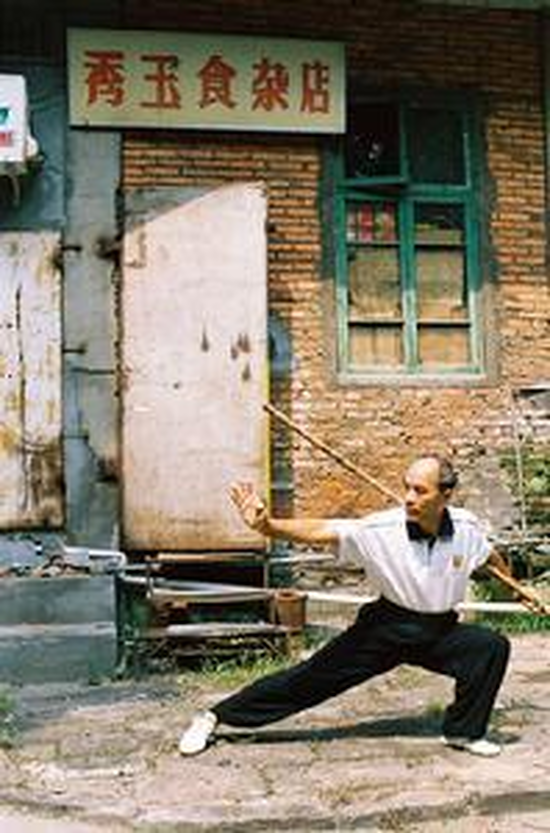
The extant Chinese language records state that Xie Chongxiang (谢崇祥) was also known as 'Xie Ru Ru' (谢如如) - and often referred to by his disciples and students as 'Ru Shi' (如师). He was trained in traditional Chinese martial arts by his teacher ‘Lin Dachong’ (林达崇) who was commonly referred to as 'Pan Yu Ba' (盘屿八). Xie Chongxiang was taught (and/or further developed) the following martial arts styles:
a) 'Whooping Crane Fist' (鸣鹤拳 - Ming He Quan).
b) 'Shaolin Arahant Fist' (少林罗汉拳 - Shao Lin Luo Han Quan).
c) 'Shaolin White Crane Fist' (少林白鹤拳 - Shao Lin Bai He Quan).
The third example is also often referred to as 'Fujian' (福建) White Crane Fist - whilst the ambiguous language used in his biography suggests that 'Whooping Crane Fist' (鸣鹤拳 - Ming He Quan) is an 'integration' of (and/or an 'improvement' upon) the 'Arahant Fist' (罗汉拳 - Luo Han Quan) style and the 'Shaolin' (or 'Fujian') White Crane Fist' (少林白鹤拳 - Shao Lin Bai He Quan) style (also referred to as 'Yongchun' [永春] White Crane Fist). (The use of the term 'Shaolin' here, refers to the idea that there once existed a number of 'Southern' (南 - Nan) Shaolin sister temples (to the famous 'Henan' Shaolin Temple) which existed in Quanzhou, Putian and Fuqing areas of Fujian province, etc, with each perfecting their own unique and distinct martial arts traditions that were spread out into the lay communities when these temples were destroyed for political reasons). This 'integrating' process appears to have been carried-out by Lin Dachong and Xie Chongxiang during their respective lifetimes. It seems that Lin Dachong built the foundation of 'Whooping Crane Fist' - whilst Xie Chongxiang further developed and completed this transformative process - eventually perfecting the 'Whooping Crane Fist' style! Xie Chongxiang is represented in a typical Confucian style of being a loyal and devout inheritor and preserver of the past - whilst also 'adding' to this wealth of ancient knowledge through his own ingenious innovations manifest through hard work and practical demonstration.
谢崇祥,男,福建福州长乐县人,中国武术名家,为鸣鹤拳传人。
谢崇祥为长乐县岱边人,小名如如,他的徒弟称呼他为如师。师从潘屿八,学习南少林白鹤拳,后以拳技闻名于福建。
琉球刚柔流空手道始祖
谢如如字崇祥,13岁随父迁居福州台江星安桥畔,父亲谢尊志在台江作细竹工谋生,如如随父亲学作竹匠。后往同乡林康官开设的宝美斋鞋铺当学徒。如如生性勤劳,白天学艺,晚上拜其父好友(盘屿人)学习拳术。他身材矮小(约1.55米左右),体格粗壮,右臂长于左臂,由于他刻苦锻炼,创造一种刚柔手法,形成独具风格的鹤拳。
琉球刚柔流空手道始祖谢如如,生于清咸丰二年(1852年),祖籍长乐县。家贫,13岁时随父谢尊志到省城福州闯荡,住在双杭星安桥畔。最初学习做细竹匠,后来又到同乡人林康官开设的宝美斋鞋店当学徒。他白日学艺,晚上跟父亲好友、南台岛盘屿人林达崇学习罗汉拳。谢如如个子矮小但体格强壮,他的右臂比左臂长,因而具有天然的优势,加上天资聪颖,就独创了一套刚柔手拳术。这种柔手法风格的鹤拳,因运气时声如鹤鸣,遂名为“鸣鹤拳”。当时有个叫“萧和尚”的将军府武术教练,听说了谢如如的事,找上门来要切磋,结果交手即败,最后甘拜下风,拜谢如如为师。当时拜谢如如为师的还有一位医生名叫王士庵,武德医德相得益彰。

 RSS Feed
RSS Feed